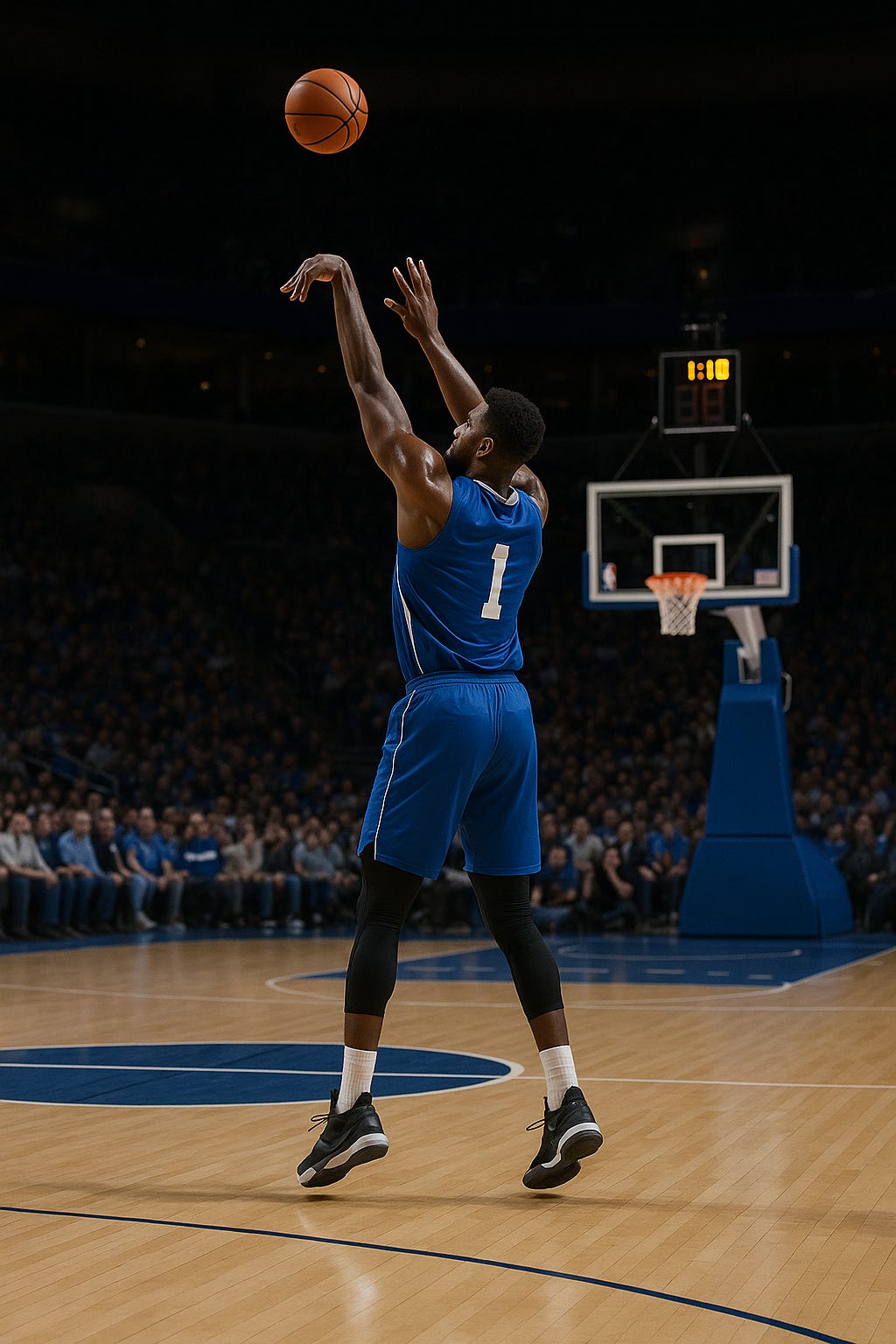Half Court
Basketball. 600 words, 2 minute read. With Gemini.
The arena was haunted. Leo saw the ghosts every game, shimmering apparitions of another time superimposed over the court. He would see a phantom fast break, two spectral figures racing down the lane for a thunderous dunk that made no sound, their movements fluid and chaotic where now there was only stillness. The crowd, bathed in the cool glow of their phone screens, saw nothing. They were watching the quiet, orderly game in front of them, the one that made perfect sense on a spreadsheet.
Leo caught the inbound pass, the leather cool and clinical against his palms. Two dribbles. His feet found their designated marks on the floor, a pale circle worn into the logo. The arena called it the Optimal Launch Point. The OLP. A small, pulsing hologram confirmed he was in position. He didn't look at the basket ninety-four feet away; he looked at the line of code his shot would represent, a perfect parabola against the dark ceiling.
He launched the ball. Its arc was flawless, a silent testament to thousands of hours of algorithmic refinement.
“That’s protocol adherence at its finest, Marty,” an announcer’s voice slid into the quiet. “Jackson’s kinematic sequencing is a model of efficiency.” “Textbook asset management on that possession, Bill,” the other replied. “You can’t win in this league by deviating from the data. The predictive models are clear.”
The ball swished. A wave of polite, muted applause washed through the lower bowl and receded instantly. The scoreboard updated. 15-12.
The timeout felt like a system diagnostic. Coach Sterling held up a tablet, its screen filled with graphs. He never made eye contact. He addressed the data.
“Jackson. Your biometrics show a fractional hesitation in your follow-through. It’s creating a risk variance of point-zero-eight percent. We need full compliance with the OLP protocol. The numbers are non-negotiable.”
Sterling’s voice was a flat line, a synthesized monotone. As he spoke, Leo felt a ghost of a pain, a sharp throb in his left ankle, and the memory ambushed him. He was nineteen, sprawled on the floor of a different arena, one that smelled of popcorn and sweat. A coach, his face red and veins bulging in his neck, was screaming at him—not with data, but with a raw, desperate passion. The roar of that crowd had been a physical force. He blinked, the memory dissolving back into the sterile, air-conditioned present. He looked past Sterling’s tablet and saw a boy, no older than ten, slumped in his seat. The boy wasn’t watching the court; he was watching a janitor mop a distant spill. His father had a hand on his shoulder, a look of quiet apology on his face.
This is what we have perfected, Leo thought. This is what we have won.
He walked back onto the court, the ball in his hands, forty seconds on the clock. He began his dribble. One. Two. The OLP pulsed before him, an invitation to comply. Sterling stared at his tablet. The opposing player stood motionless, waiting.
Leo looked again at the boy in the stands. He made a conscious choice. He would break the code.
He pushed the ball forward, a third dribble, then a fourth, crossing the half-court line. It felt like a trespass, a step into a forbidden country. A collective gasp, sharp and sudden, cut through the arena’s hum. It was the first truly human sound he had heard all night. The defender, startled, lurched into a defensive stance his body had all but forgotten. Leo’s lungs burned. His muscles, dormant and conditioned for a different kind of work, screamed in a symphony of joyous, unfamiliar pain. The floor rushed toward him. The basket, once a distant target for statistical probability, was now a destination.


